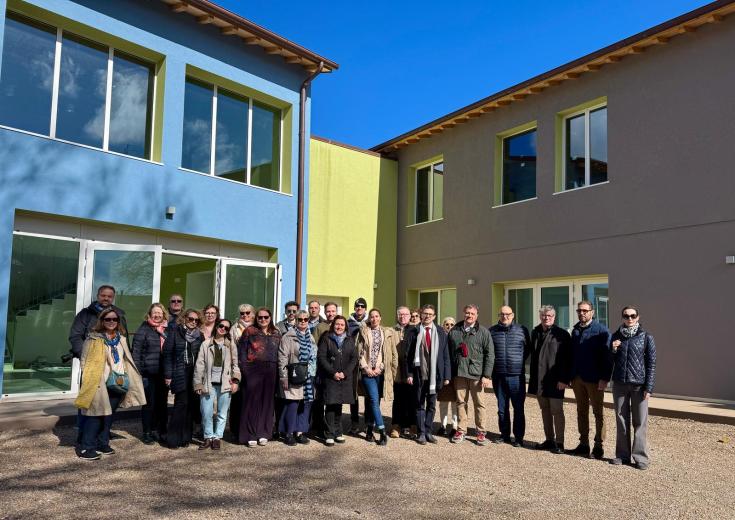Interregional meeting of EDIN in Italy

The Interregional Event of March 25: Showcasing Tuscany's Local Experiences
On March 25, an interregional event took place with the goal of sharing valuable local experiences from Tuscany, specifically focusing on data and insights that would be of interest to the European partners involved in the EDIN project. The event was attended by Leonardo Marras, the Councilor for Economy and Tourism of the Tuscany Region, who provided important context for the day's discussions.
The event was organized into three key sessions that explored a variety of relevant topics:
- Digital Nomads in Tuscany: Analysis and Best Practices
- Good Practices of Community Cooperatives and the Collaborative Economy
- The Future of Villages: Nomadic Work and the Digital Revolution
The goal of the organizers was to involve as many Tuscan stakeholders and experts as possible to ensure the day would be as insightful and productive as it could be.
Organizations like Start Working Pontremoli, Smartway Montepulciano, and various community cooperatives were highlighted as examples of innovative local initiatives.
Regional Policies and Law No. 11 of February 2025
During the event, the Tuscany Region's representatives outlined the region’s policies, particularly focusing on Regional Law No. 11 of February 4, 2025. This law is designed to enhance the concept of Diffused Tuscany. The regulation aims to ensure equal opportunities for access to services and promote territorial cohesion, focusing on inland and mountain areas, for which interventions are planned to preserve their uniqueness.
Two Key Studies on Digital Nomadism and Development of Inland Areas
Two important studies were presented during the event:
- Study by Iris Ricerche: This study explored digital nomadism from a sociological and anthropological perspective, examining how local governments and institutions have been adjusting their policies to attract remote workers. It also highlighted the broader implications of this growing trend for regional development.
- Study by Irpet: Focused on Tuscany's internal areas, this research developed a multidimensional index that evaluates the attractiveness of Tuscan municipalities based on six key factors: digitalization, economic accessibility, cultural vibrancy, transportation, quality of hospitality, and landscape. The study provided valuable recommendations for regional policies, offering strategies to attract digital nomads to Tuscany’s most vulnerable areas.
A Visit to Santa Fiora and the Smart Village Project
The following day, March 26, the EDIN delegation visited Santa Fiora, where they were introduced to the Smart Village project. They also heard from local entities, including Santa Fiora Ospitalità Diffusa and Teatro Povero of Monticchiello. These organizations are actively involved in transforming their communities.
The study visit concluded with tours of two community cooperatives in Montelaterone and Montegiovi. These cooperatives, supported by regional contributions, are playing a pivotal role in providing essential services to their communities and attracting new residents.
A Promising Future for the Amiata Region
The mayors of Santa Fiora, Federico Balocchi; Arcidosso, Jacopo Marini; and Castel del Piano, Cinzia Pieraccini, spoke about the potential of digitalization and digital nomadism to bring significant benefits to the Amiata region. They highlighted several key factors that make the area attractive to remote workers, such as its high-quality environment and landscape, strong social connections, and relatively low living costs. When combined with investments in fast internet connections, modern coworking spaces, and other infrastructure, the region could become a desirable destination for digital nomads.
In conclusion, the event not only provided valuable insights into the current state of digital nomadism and community-driven development in Tuscany but also outlined the strategic steps the region is taking to embrace the revitalization of inland areas.